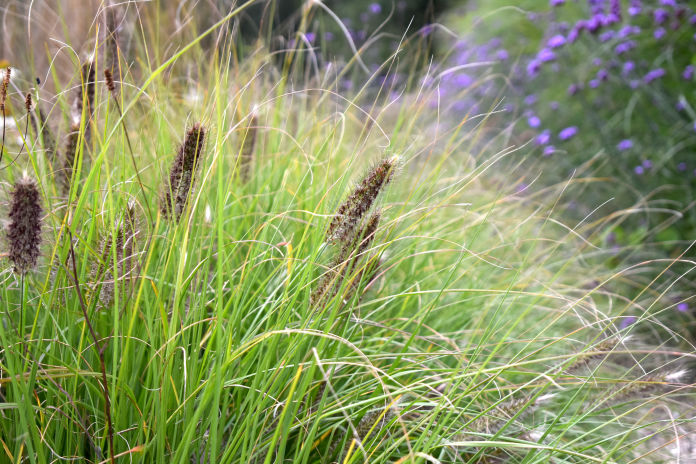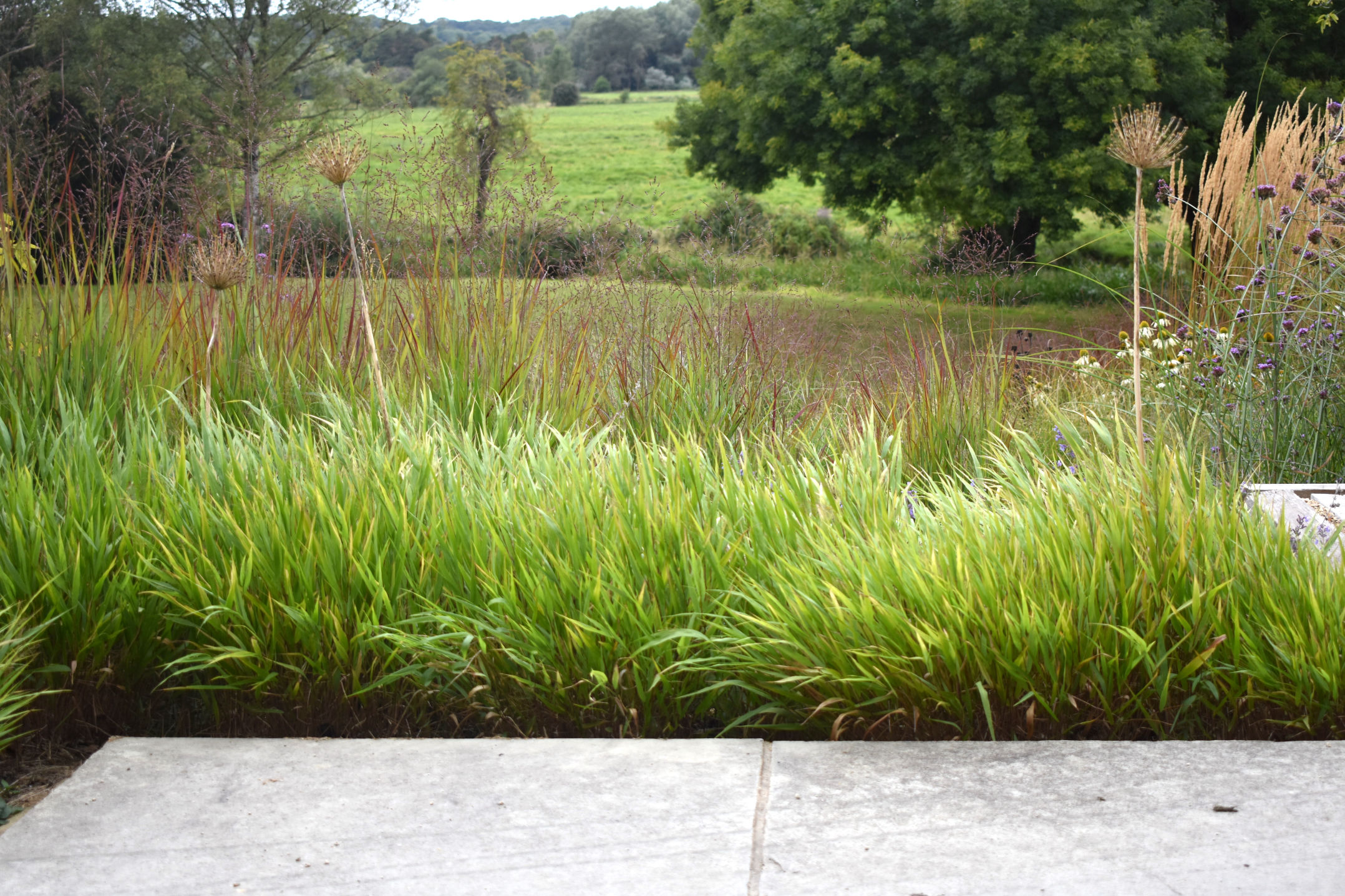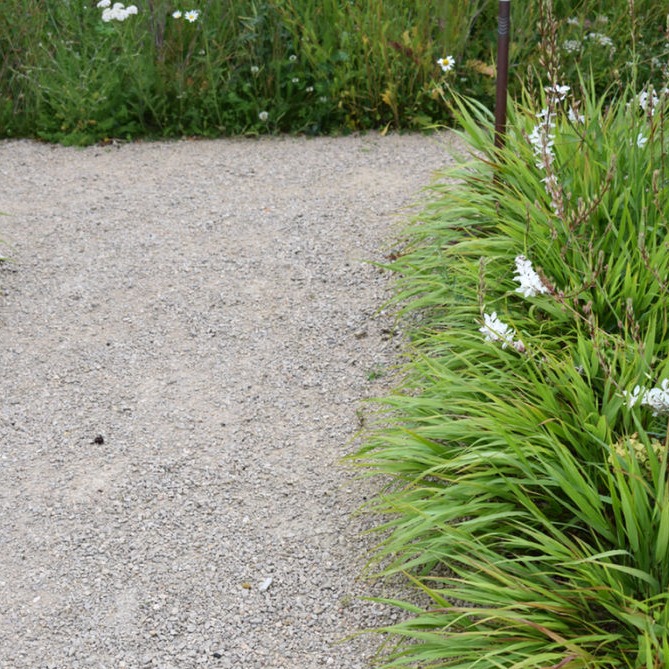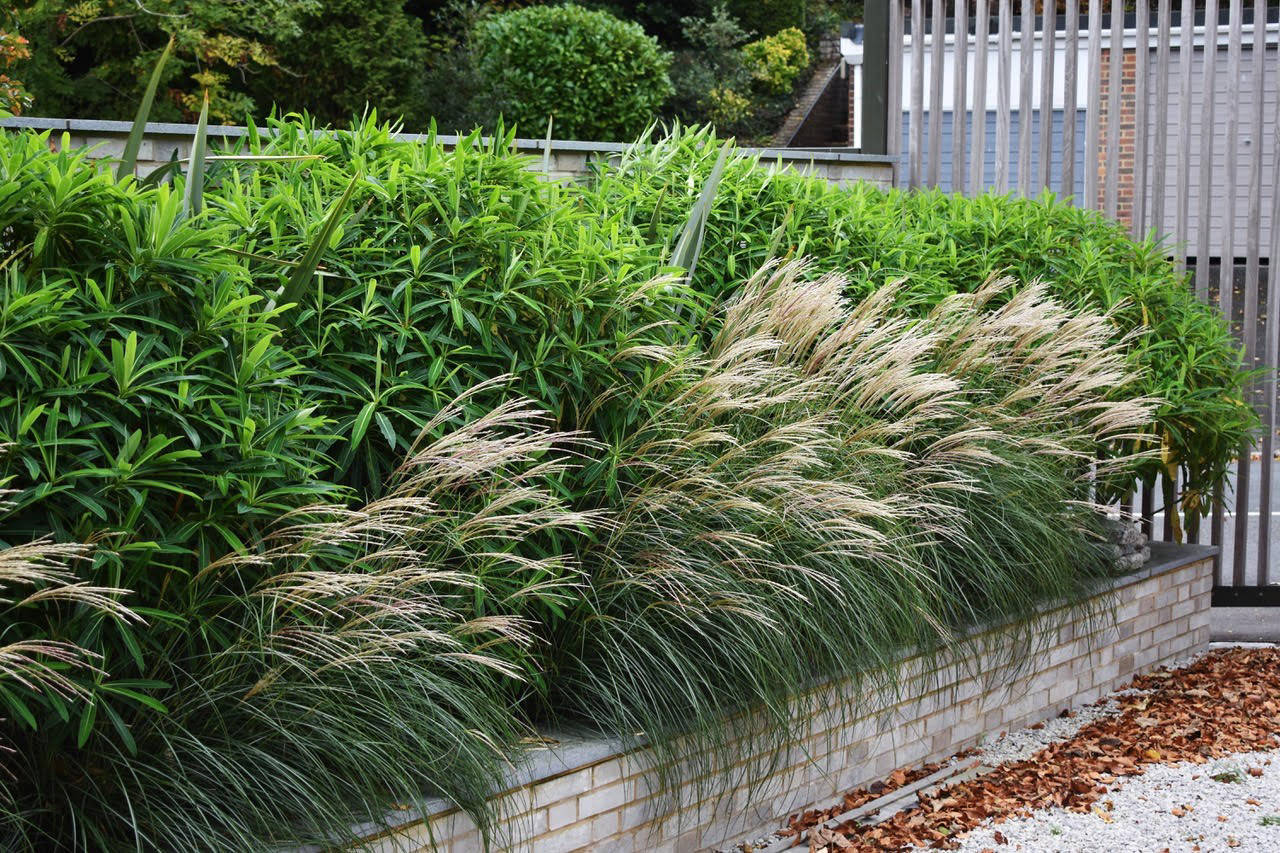
Pennisetum alopecuroides 'Hameln'

Hakonechloa macra


Grasses create structure in the new perennial garden and are a vital part of the natural border. They provide texture, movement and add structure through the winter months. Grasses (and sedges) are incredibly versatile so can be used in most situations (damp / dry / sun / shade).
Ornamental grasses can either be used in large groups acting as the unifying element to cement the more flamboyant flowering plants or they can operate as structural elements adding punctuation to the border.




Deschampsia cespitosa (Tufted hair grass):
Flourishes in well-drained soil, particularly in moist and fertile conditions. It can tolerate some shade but generally prefers full sun.
Pennisetum alopecuroides (Fountain grass):
Flourishes in fertile, well-drained soil. Prefers full sun but can handle partial shade.
Miscanthus sinensis (Chinese silver grass):
Grows well in most soils but prefers fertile, well-drained soil. Thrives in full sun.
Calamagrostis x acutiflora (Feather reed grass):
Adaptable to different soil types but prefers moist, well-drained soil. Tolerates both full sun and partial shade.
Panicum virgatum (Switchgrass):
Thrives in most soils, including poor soils, but prefers well-drained soil. Enjoys full sun but can tolerate some shade.
Carex morrowii (Japanese sedge):
Grows well in moist, well-drained soil. Can handle partial shade to full shade.
Molinia caerulea (Moor grass):
Flourishes in moist, well-drained soils. Prefers sun to partial shade.
Luzula sylvatica (Great wood-rush):
Thrives in fertile, well-drained soils, particularly in shaded areas.
Hakonechloa macra (Japanese forest grass):
Flourishes in rich, moist, well-drained soil. Prefers partial to full shade.